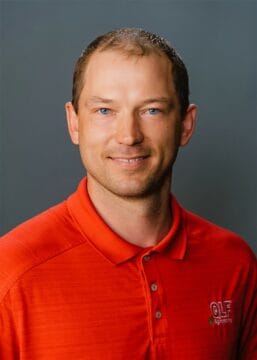by Anthony Roth, Agronomy Research Center Greenhouse Manager
Molasses is a brown, viscous liquid derived from sugarcane. Sugarcane was introduced to New Orleans, Louisiana in 1751 by a French Jesuit Priest, and 44 years later Etienne de Boŕe produced granulated sugar from sugarcane.(2) Producing sugar from sugarcane is known as the milling process and is a very intensive process including chopping and shredding of the cane, squeezing the cane pulp through big rollers to extract juice. The juice is then heated, clarified, and concentrated into a thick syrup called massecuite before entering the centrifugals. The centrifugals separate the molasses from the sugar through high speed spinning similar to a washing machine on spin cycle getting the excess water out of the clothes. This first step of crystallization yields “A” molasses and then is concentrated again to yield “B” grade molasses, and then concentrated again to yield the “C” or blackstrap molasses which is what Quality Liquid Feeds (QLF) procures.
Liquid Carbon Based Fertilizer (L-CBF) is QLF’s molasses based fertilizer. Molasses contains 22% water, 75% carbohydrates, vitamins such as B6 and minerals including magnesium, manganese, phosphorus, and potassium.(1) Sucrose makes up approximately 29% of the carbohydrates with 12% glucose and 13% fructose.(1) There is more to molasses than just sugar and there is more to our L-CBF products than just molasses. We are constantly testing countless combinations of ingredients to build balanced fertilizers that feed plants and soil biology. Focusing on balanced nutrition mimics the mutualistic relationship between plants and soil biology. Plants use the sun, carbon dioxide, and water to make sugar and other compounds collectively called root exudates, and the plants share 30% to 40% of what they produce in turn to feed soil biology. This jumpstarts the population of the soil biology and increases nutrient cycling (creates more plant available nutrients) performed by the soil food web. Having nutrients in plant available forms and available in ample amounts without excess allows plants the opportunity to perform their best while not losing nutrients to the environment. Growing greater yields with less added nutrients such as nitrogen means better return on investments for producers and less potential for pollution to the environment.
QLF has been a family owned business for over 40 years and has built a reputation for products based on quality, consistency, and service. For the L-CBF products the quality starts with the “American Made” blackstrap molasses that they source from Louisiana. QLF has 44,000,000 gallons of storage dedicated to molasses as well as 550 rail cars, 20 barges, and a fleet of over 100 semi tractors and trailers to ensure quality and service to their customers. So the next time you are eating a molasses cookie and planning for an improvement in your next year fertilizer inputs, reach out to QLF Agronomy. We are the leader in manufacturing with a consistent quality sugar cane molasses source and creator of proven liquid carbon-based fertilizers.
1)https://en.wikipedia.org/wiki/Molasses
2)Louisana Sugarcane Pictorial by Ronnie Oliver

